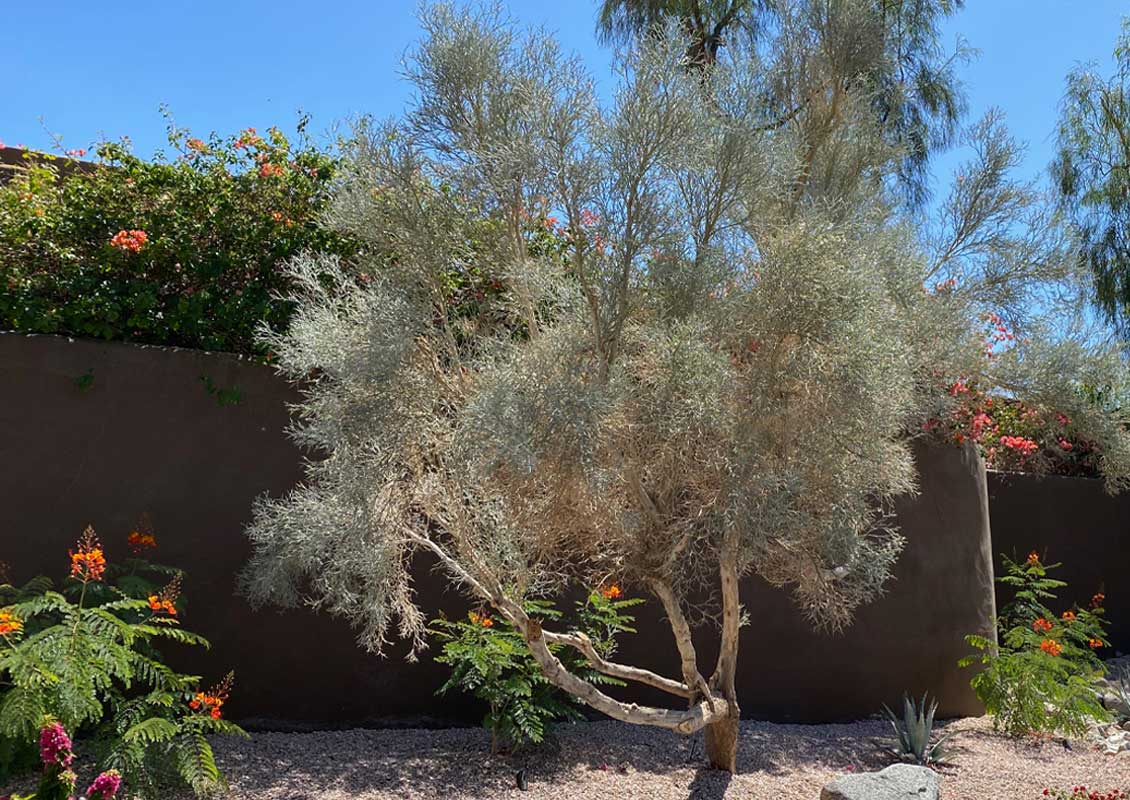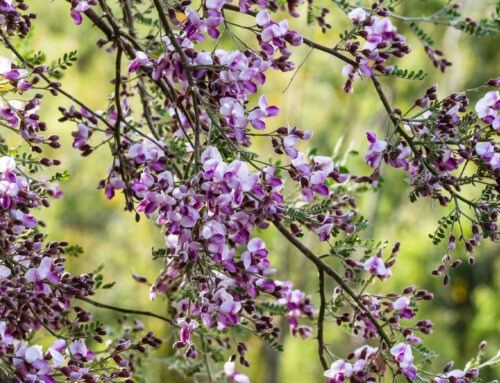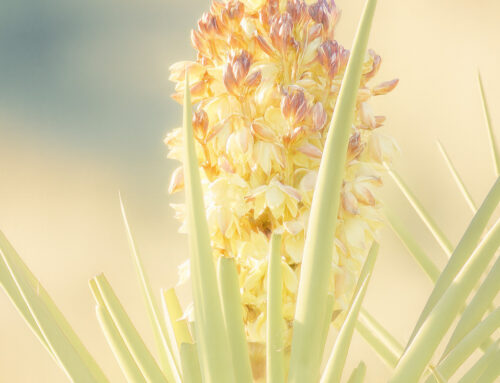In the Southern California desert region, the term Smoke Tree typically refers to the desert smoke tree, or Psorothamnus spinosus (formerly classified as Dalea spinosa). This plant is native to the arid regions of the southwestern United States, including the Mojave and Sonoran Deserts.
The Smoke Tree is well adapted to extreme heat, poor soils, and infrequent rainfall, making it an iconic part of the desert landscape, particularly in areas like Joshua Tree National Park, Anza-Borrego Desert State Park, and our Coachella Valley.
The desert smoke tree has a distinctive and somewhat haunting appearance. It grows as a small, leafless tree or large shrub, often reaching heights of 10 to 20 feet. For most of the year, it appears as a tangle of bluish-gray, spiny branches, giving it a ghostly, skeletal look that blends into the desert’s palette. It is a leafless plant for much of the year, relying instead on photosynthesis through its stems – a clever adaptation to conserve moisture in its arid habitat.
In late spring or early summer, usually following seasonal rains, the smoke tree puts on a brief but stunning display of vibrant violet to deep blue flowers. These pea-like blooms cluster at the ends of the branches, creating a soft, smoky halo that contrasts beautifully against the desert surroundings. The blooming period is relatively short, but it is a vital time for pollinators like native bees and butterflies.
Ecologically, the desert smoke tree plays an important role. Its deep roots help stabilize desert washes and sand dunes, and it is well suited for restoration projects in desert environments. Despite its tough, spiny appearance, it is a hardy survivor and a subtle beauty of the desert.






